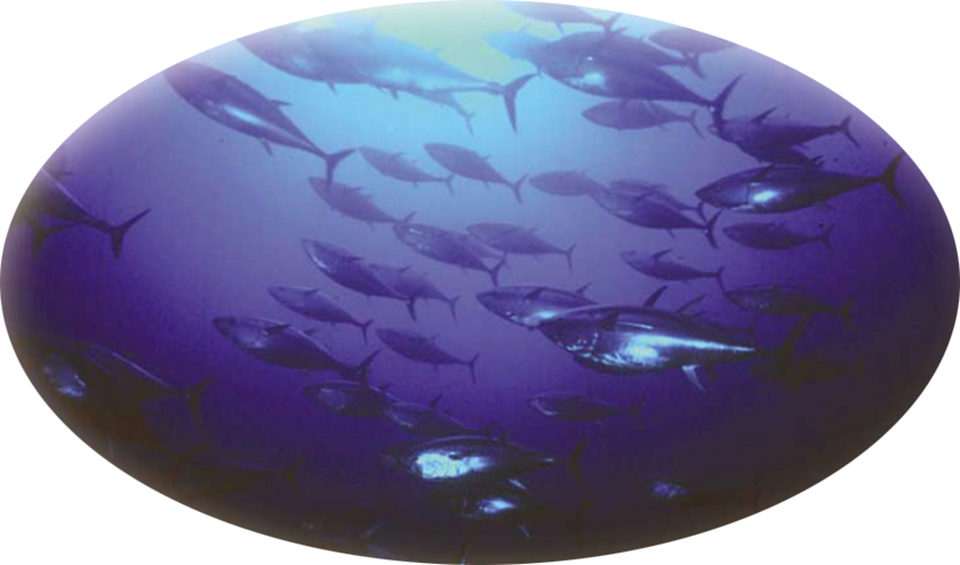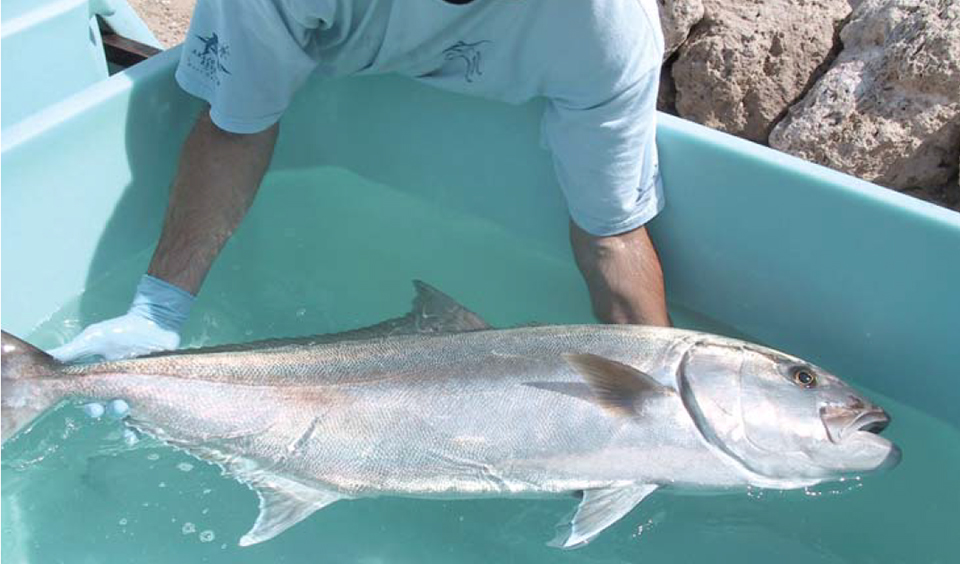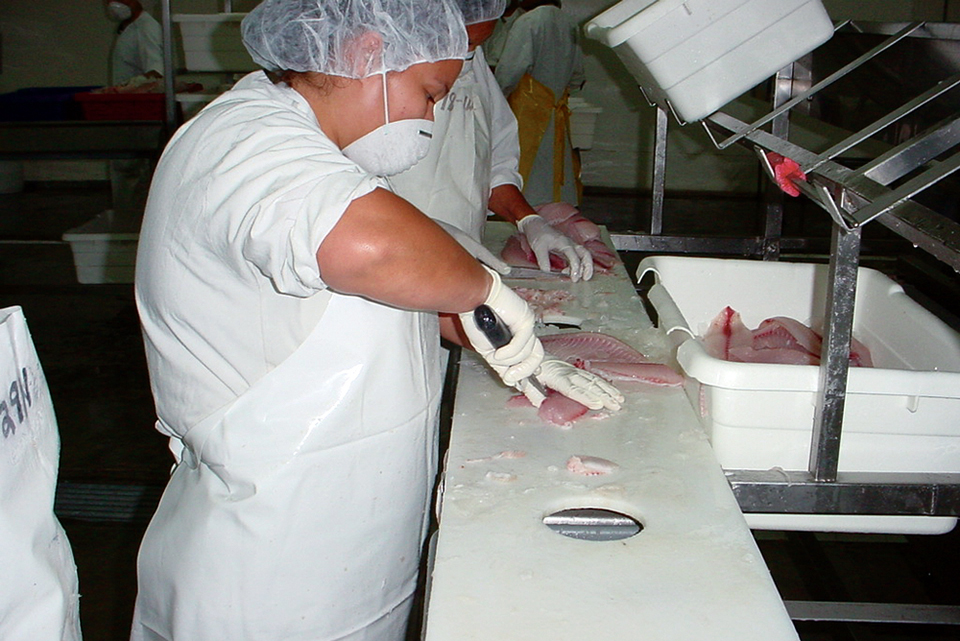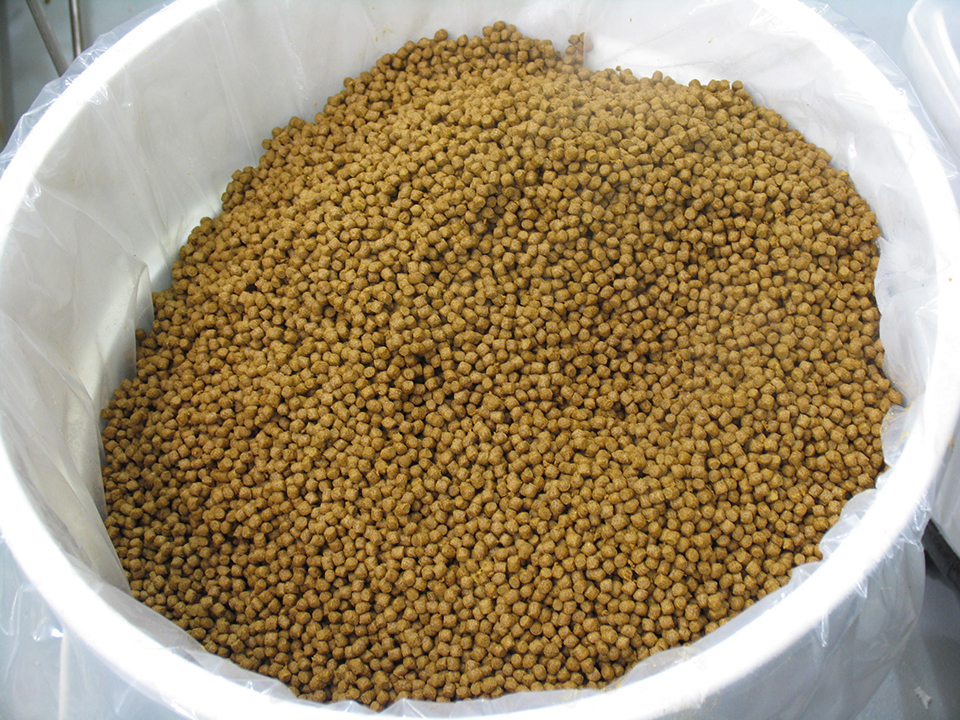Problematic compounds for procedures, processors

Cadaverine, putrescine and histamine are diamines that can be produced postmortem from the decarboxylation of specific free amino acids in fish and shellfish tissue. The decarboxylation process can proceed through two biochemical pathways: endogenous decarboxylase enzymes that occur naturally in fish or shellfish, or exogenous enzymes released by the various microorganisms associated with the seafood product.
Endogenous production of diamines is insignificant when compared to the exogenous pathway. Both the nature of the microflora present and the composition of the product affect the amount of decarboxylase a bacterial cell may release. In general, histamine, putrescine, cadaverine, tyramine, tryptamine, beta-phenylethylamine, spermine, and spermidine are considered the most important biogenic amines in foods. However, beta phenylethylamine, spermine, and spermidine are not end products of bacterial decomposition in fishery products.
Fish muscle is naturally rich in free amino acids, and the content can increase even further postmortem. The high concentration of proteolytic enzymes in the intestinal tract is responsible for the rapid autolytic process and high free amino acid content observed in fishery products. Amino acid formation depends on the harvesting season and feeding activity prior to capture. For example, fish harvested during summer or the feeding season quickly liberate large quantities of lysine and arginine.
The activity of amino acid decarboxylase depends on a range of factors, including fermentable sugars, pH, and redox potential. The influence of environmental temperature, the nature of microflora, decarboxylase activity, and intestinal tract content on biogenic amine formation can be major reasons for reported discrepancies concerning levels of biogenic amines in fresh and processed fish.
Poor experimental design may be another reason for discrepancies. Regardless, it is clear that high amino acid content and bacterial activity could rapidly result in an elevated concentration of biogenic amines if the proper controls are not in place.
Safety aspects
Biogenic amines, particularly histamine, have been implicated as the causative agent in a number of scombroid food poisonings. People display differing levels of sensitivity to biogenic amine exposure. Clinical signs are more severe in those who take medications which inhibit enzymes that normally detoxify histamine in the intestines.
Histamine exerts its effects by binding to receptors on cellular membranes in the respiratory, cardiovascular, gastrointestinal, and hematological/immunological systems, and the skin. The symptoms of histamine poisoning generally resemble those encountered with immunoglobulin E -mediated food allergies. They usually appear shortly after the food is ingested and last up to 24 hours. Symptoms may be gastrointestinal (nausea, vomiting, diarrhea), circulatory (hypotension), cutaneous (rash, urticaria, edema, localized inflammation), and/or neurological (headache, palpitations, tingling, flushing or burning, itching).
Antihistamines can be used effectively to treat the symptoms. Despite all uncertainties reported, histamine levels above 500-1,000 milligrams per kilograms (500-1,000 ppm) are considered potentially dangerous to human health based on the concentrations found in food products involved in past incidents of histamine poisoning. Even less is known about the toxic doses of other amines. Threshold values of 100-800 milligrams per kilograms for tyramine and 30 milligrams per kilograms for phenylethylamine have been reported.
In estimating the toxic levels of biogenic amines, one should consider the amount of food consumed, the presence of other amines in the food or other dietary components, and the use of alcohol and medicine. An additional concern, especially if nitrite was used in cold-smoked products, is that secondary amines such as putrescine and cadaverine can react with nitrite to form carcinogens.
Species association
Often associated with histamine poisoning are the scombroid fish belonging to the families Scomberesocidae and Scombridae, which include the tunas, bonito, mackerels, bluefish, and saury. Tuna and mackerel are the fish most commonly associated with histamine poisoning, but other fish are also associated with outbreaks of scombroid poisoning. Examples include mahi-mahi, sardines, anchovies, herrings, and marlin. The association of type of fish and biogenic amine poisoning may reflect the amount of consumption of a specific fish.
Recently, the United States Food and Drug Administration established a guidance level for histamine of 5 milligrams per 100 g (50 ppm) that assures the safe consumption of scombroid or scombroidlike fish. It also recommended the use of other data to judge fish freshness, such as the presence of other biogenic amines associated with fish decomposition.
A maximum average histamine content of 10 milligrams per 100 grams has been established in the European Community for acceptance of tuna and other fish in the Scombridae and Scomberesocidae families.
The European Community has suggested that in the future a maximum 300 ppm total biogenic amines in fish and fish products may be an appropriate legal limit. It is important to note, however, that there may be a type of poisoning that does not arise from high levels of histamine. Thus a low histamine level may not provide absolute assurance of safe products.
It may be more appropriate to say that the absence of decomposition in fish renders it safe. Safe products would have no evidence of spoilage, including odors of decomposition, high histamine levels, and other amines such as cadaverine.
Histamine toxicity
It has been reported that very large amounts of histamine can be given orally with-out causing adverse effects. This effect is due to the conversion of his-tamine to inactive N-acetylhistamine by intestinal micro-flora. Human subjects given up to 67.5 mg histamine orally did not produce any subjective or objective symptoms of histamine poisoning.
However, in another study, 36 mg or more of histamine was administered to subjects who subsequently developed symptoms associated with histamine toxicity. Symptoms also appeared with tuna sandwiches containing 100-, 150-mg and 180-mg doses of histamine.
Generally, high histamine levels cause a toxic response, but research has indicated other factors may also be responsible. It has been concluded that no relationship exists between the concentrations of six amines (including histamine, cadaverine, and putrescine) and the onset of scombrotoxic symptoms. The reported deleterious effects of histamine ingestion at one meal are shown in Table 1.
Flick, Effects observed in test subjects, Table 1
| Effect | Dose |
|---|
Effect | Dose |
|---|---|
| Mild poisoning | 8-40 mg histamine |
| Disorders of moderate intensity | 70-1,000 mg histamine |
| Severe incidents | 1,500-4,000 mg histamine |
Toxicity potentiators
Histamine is apparently not the sole cause of the toxicity, since cases have also been observed after the consumption of foods with low concentrations of histamine. Strong evidence exists that the biogenic amines such as putrescine, cadaverine, spermine, and spermidine in fish tissue can potentiate the toxic effect of histamine by inhibiting intestinal histamine-metabolizing enzymes such as diamine oxidase, potentiating histamine uptake, and liberating endogenous histamine in intestinal fluids.
It has been reported that fish implicated in a scombroid poisoning incident had high levels of inhibitors that interfered with histamine metabolism. Monoamineoxidase inhibitor drugs used for the treatment of depression, hypertension, and tuberculosis have also been observed to potentiate the toxic effect of histamine.
Studies have shown that the levels of cadaverine in toxic or decomposed fish are generally several times greater than the levels of putrescine. When cadaverine was administered through stomach catheters simultaneously with histamine, peroral toxicity was observed in the test guinea pigs.
At 10 degrees-C, the high cadaverine content of mackerel in comparison to herring could be responsible for mackerel often being implicated in scombroid poisoning and not herring, since histamine levels were similar in both. Cadaverine and putrescine, as well as other diamines, have been suggested to facilitate the transport of histamine through the intestinal wall and increase its toxicity.
It is possible that widespread bacterial endotoxins could result in hypersensitivity to histamine. These compounds are complex, heat-stable, lipopolysaccharide materials produced primarily by Gram-negative bacteria. Endotoxins are known to induce histamine releases in animals similar to those seen in anaphylaxis. However, extremely low levels of endotoxin have been found in both safe tuna and tuna known to have caused illness in humans.
(Editor’s Note: This article was originally published in the August 2005 print edition of the Global Aquaculture Advocate.)
Now that you've reached the end of the article ...
… please consider supporting GSA’s mission to advance responsible seafood practices through education, advocacy and third-party assurances. The Advocate aims to document the evolution of responsible seafood practices and share the expansive knowledge of our vast network of contributors.
By becoming a Global Seafood Alliance member, you’re ensuring that all of the pre-competitive work we do through member benefits, resources and events can continue. Individual membership costs just $50 a year.
Not a GSA member? Join us.
Author
-

George J. Flick, Jr., Ph.D.
Food Science and Technology Department
Virginia Tech/Virginia Sea Grant (0418)
Blacksburg, Virginia 24061 USA
Tagged With
Related Posts

Health & Welfare
Scombrotoxins, part 2
Since biogenic amines are a health issue in seafood, harvesters and processors should understand what conditions encourage their formation, where they form in fish, and how they are affected by bacterial flora.

Health & Welfare
Scombrotoxins, part 3
While freezing, salting, smoking and irradiation can minimize growth biogenic amine formation, special care from harvest through consumption can prevent scombrotoxin poisoning.

Intelligence
Detection of histamine-producing bacteria in fish
Methods for analyzing histamine in fish, which causes many seafood-related illnesses, include test kits and high-performance chromatographic liquids.

Intelligence
Off-flavors in aquaculture products, part 3
Off-flavor compounds produced by low-molecular-weight amine compounds present in fish are degraded into ammonia or other nitrogenous compounds during storage.

